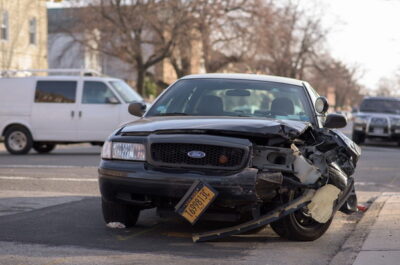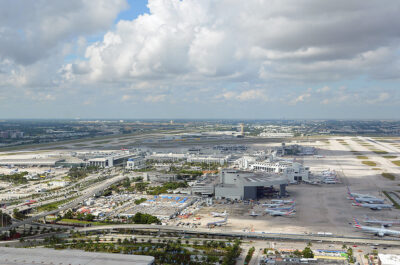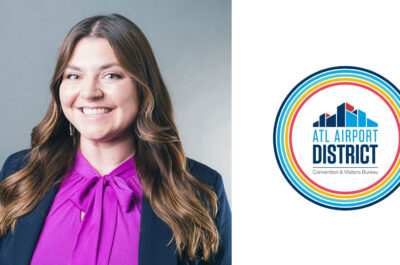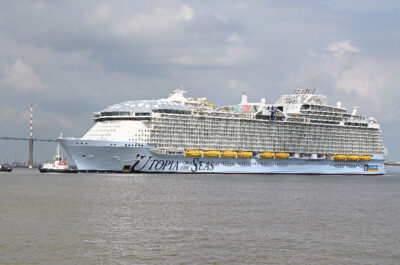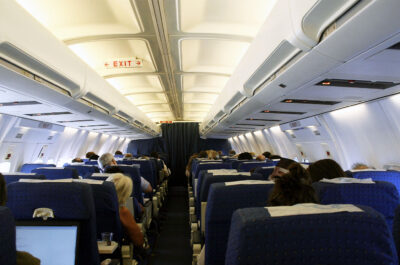The Federal Aviation Administration (
The Federal Aviation Administration (
The government of Panama has indicated its desire to correct the issues identified as a result of the FAA reassessment. The FAA will continue to remain engaged with the civil aviation authority of Panama and will periodically review the situation.
This announcement is part of the FAA`s International Aviation Safety Assessment (IASA) program, under which the agency assesses the civil aviation authorities of all countries with air carriers that operate to the U.S., and makes that information available to the public.
The assessments are not an indication of whether individual foreign carriers are safe or unsafe. Rather, they determine whether or not foreign civil aviation authorities are meeting ICAO safety standards, not FAA regulations.
Countries with air carriers that fly to the U.S. must adhere to the safety standards of ICAO, the United Nations` technical agency for aviation that establishes international standards and recommended practices for aircraft operations and maintenance.
The FAA, with the cooperation of the host civil aviation authority, assesses countries with airlines that have operating rights to or from the U.S., or have requested such rights.
Specifically, the FAA determines whether a foreign civil aviation authority has an adequate infrastructure for international aviation safety oversight as defined by ICAO standards. The basic elements that the FAA considers necessary include: 1) laws enabling the appropriate government office to adopt regulations necessary to meet the minimum requirements of ICAO; 2) current regulations that meet those requirements; 3) procedures to carry out the regulatory requirements; 4) air carrier certification, routine inspection, and surveillance programs, and 5) organizational and personnel resources to implement and enforce the above.
The FAA has established two ratings for the status of these civil aviation authorities at the time of the assessment: (1) does comply with ICAO standards, (2) does not comply with ICAO standards.
Category 1 – Does Comply with ICAO Standards: A civil aviation authority has been assessed by FAA inspectors and has been found to license and oversee air carriers in accordance with ICAO aviation safety standards.
Category 2 – Does Not Comply with ICAO Standards: The FAA assessed this country`s civil aviation authority (CAA) and determined that it does not provide safety oversight of its air carrier operators in accordance with the minimum safety oversight standards established by ICAO. This rating is applied if one or
more of the following deficiencies are identified: (1) the country lacks laws or regulations necessary to support the certification and oversight of air carriers in accordance with minimum international standards; (2) the CAA lacks the technical expertise, resources, and organization to license or oversee air carrier operations; (3) the CAA does not have adequately trained and qualified technical personnel; (4) the CAA does not provide adequate inspector guidance to ensure enforcement of, and compliance with, minimum international standards; and (5) the CAA has insufficient documentation and records of certification and inadequate continuing oversight and surveillance of air carrier operations. This category consists of two groups of countries.
One group is countries that have air carriers with existing operations to the U.S. at the time of the assessment. While in Category 2 status, carriers from these countries will be permitted to continue operations at current levels under heightened FAA surveillance. Expansion or changes in services to the U.S. by
such carriers are not permitted while in Category 2, although new services will be permitted if operated using aircraft wet-leased from a duly authorized and properly supervised U.S. carrier or a foreign air carrier from a category 1 country that is authorized to serve the United States using its own aircraft.
The second group is countries that do not have air carriers with existing operations to the U.S. at the time of the assessment. Carriers from these countries will not be permitted to commence service to the U.S. while in Category 2 status, although they may conduct services if operated using aircraft wet-leased from a duly authorized and properly supervised U.S. carrier or a foreign air carrier from a Category 1 country that is authorized to serve the
U.S. with its own aircraft.
No other difference is made between these two groups of countries while in a Category 2 status.
The FAA has assisted civil aviation authorities with less than acceptable ratings by providing technical expertise, assistance with inspections, and training courses. The FAA hopes to work with other countries through ICAO to address non-compliance with international aviation safety oversight standards.
The FAA will continue to release the results of safety assessments to the public as they are completed. First announced in September 1994, the ratings are part of an ongoing FAA program to assess all countries with air carriers that operate
to the U.S.
Theodore is the Co-Founder and Managing Editor of TravelDailyNews Media Network; his responsibilities include business development and planning for TravelDailyNews long-term opportunities.


























































